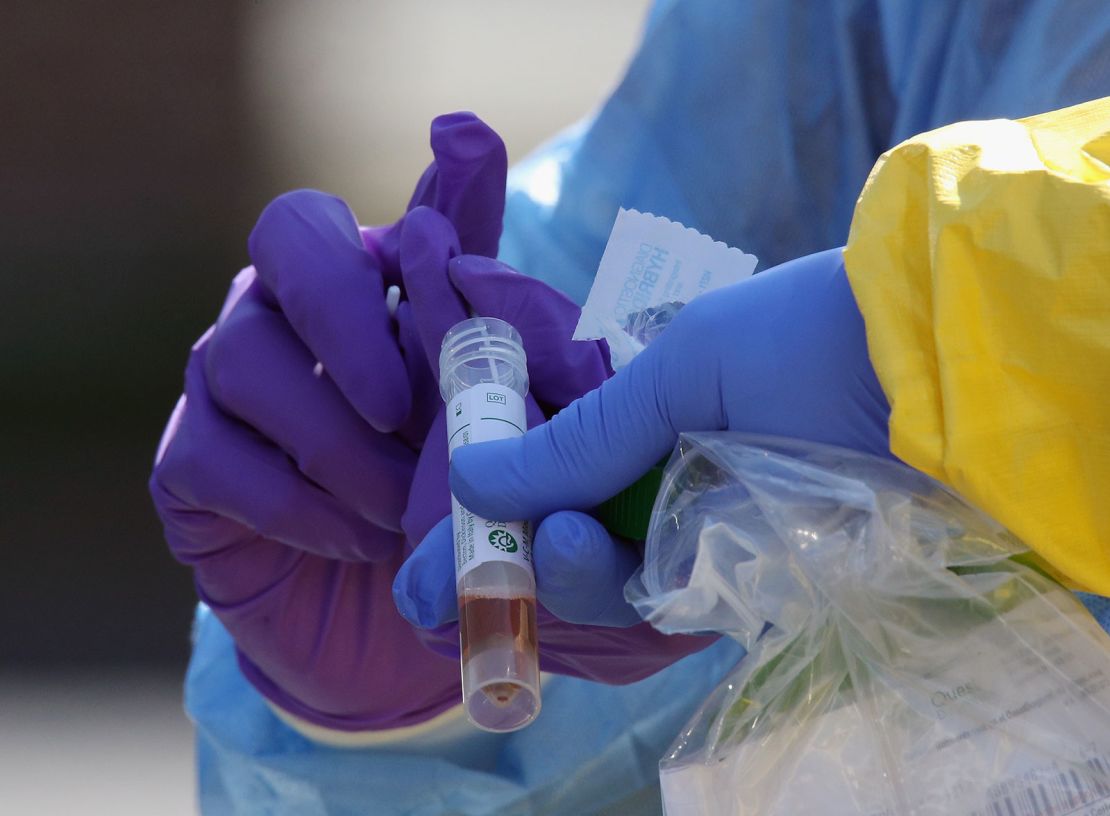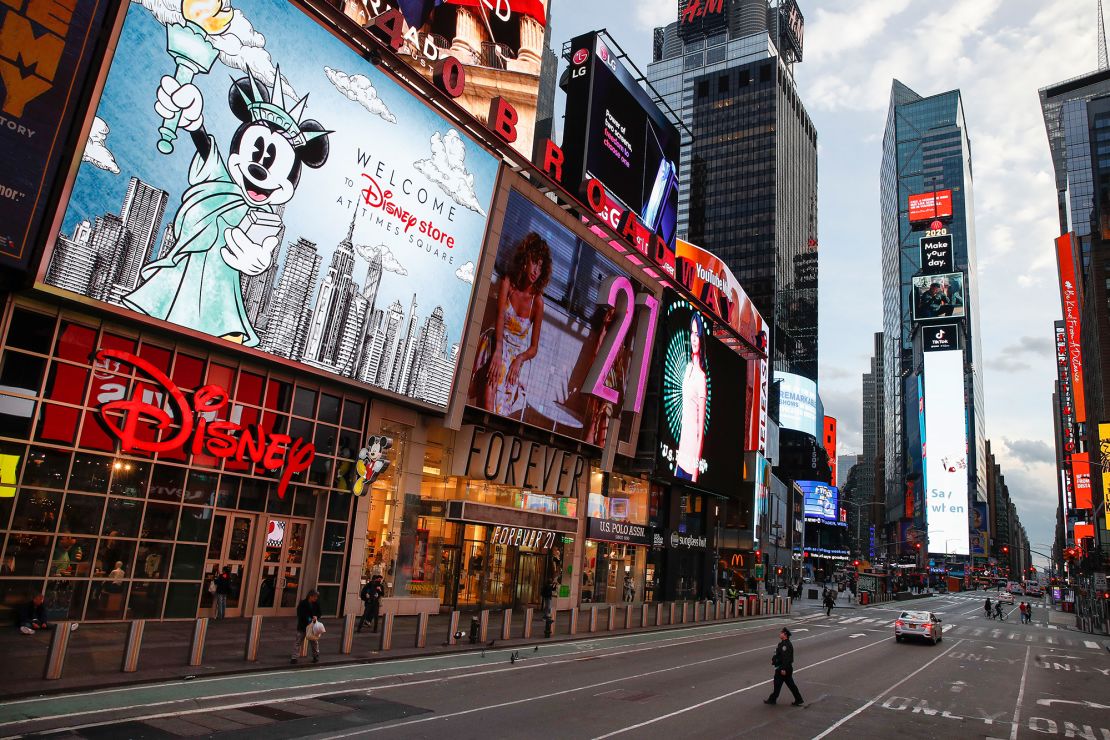There were over 74,000 cases of coronavirus in the United States as of Thursday midday. About half were in New York – almost 10 times more than any other state.
Why has the outbreak hit New York so much harder than other places?
Health experts said the answers are largely specific to the New York metropolitan area – its density and population, primarily – but they are also a warning to other states that think they may be spared.
New York is the epicenter for now, but Covid-19 will not stop there.
“The notion that the book is written on how this is going to play out across the country is dangerous,” said Dr. Kent Sepkowitz, CNN medical analyst and professor of Medicine and Infectious Diseases at the Weill Cornell Medical College in New York City. “We’re seeing New Orleans going up now, Detroit. (In) the next few weeks, many cities will have a New York story.”
High density and size
The first and most obvious explanation for the severity of the area’s outbreak is that New York is the largest and most densely populated city in the US, and coronavirus tends to spread in dense places.
“That spatial closeness makes us vulnerable,” New York Gov. Andrew Cuomo said Wednesday.
New York City had an average of just over 27,000 people per square mile, according to the 2010 Census. That’s more than double the density of Chicago and Philadelphia and more than three times the density of Los Angeles.
At all times of day, New Yorkers pack together on the subway, bump into each other on sidewalks and brush knees at bars and restaurants – all while potentially contagious. They live in crowded apartment buildings, squeezing up stairs or into elevators with neighbors. The transit system connects people across all five boroughs, so most people don’t own cars that might otherwise separate people.
“We’re used to crowds,” New York City Mayor Mayor Bill de Blasio said. “We’re used to lines. We’re used to being close together.”
With over 8 million people, New York City is also the largest city in the country. So New York’s high number of coronavirus cases is also just a reflection of its size. The state will likely lead the country in coronavirus cases even if its infection rate per person is not the highest, Sepkowitz said.
High testing rates

Another reason why New York has so many confirmed coronavirus cases is because it is looking for them.
The US has lagged behind other countries in testing suspected cases, and people across the country have told CNN that they have been unable to get tested.
New York, though, has made a dedicated push to ramp up testing at hospitals, labs and drive-through centers specifically set up in the most dense areas. With FDA approval, New York state authorized 28 public and private labs to begin testing for coronavirus on March 13, the first state to do so.
Cuomo said over 100,000 people have been tested for coronavirus in New York. He said Thursday that about 25% of all testing nationwide has been performed by New York.
“We’re hunting positives,” Cuomo said. “We’re hunting positives so we can isolate them and reduce the spread.”
Widespread testing may make the numbers look bad, sure, but health officials say it’s vital to slowing the spread of the virus. The more you test, the more you can isolate those people who have the virus and thereby stop it spreading.
Still, testing is just a part of the explanation for the high totals, according to Dr. Arthur Caplan, a CNN medical analyst and the head of the Division of Medical Ethics at NYU’s School of Medicine.
“I think it is true that we have a worse outbreak here just by admissions to ICUs as they begin to build. It’s not just testing,” he said.
Slow early response
Cuomo has earned rave reviews for his daily press conferences during the crisis. But both he and de Blasio were slow to aggressively shut schools, events and social gatherings in the early days of the outbreak.
“Social distancing isn’t going to stop transmission but it makes it slower and that makes it easier to treat people,” Caplan explained. “The old ‘flatten the curve.’ I think they were too slow. I think the whole country was too slow.”
New York state had its first case of community spread, meaning its origin was not known, on March 2 in New Rochelle, a suburb of New York City. By March 11, there were 216 confirmed cases in the state, and that number rose to 613 by March 14.
Cuomo and de Blasio limited gatherings of over 500 people on March 12 but resisted disrupting life too much.
“We are going to very quickly put out guidance about having to reduce crowds and audiences while still having a certain amount of activity,” de Blasio said at the time.
As coronavirus cases continued to rise exponentially, that activity no longer became sustainable. New York ordered all schools closed by March 18, when it already had 2,300 cases. Cuomo ordered non-essential workers to stay at home beginning March 22, when there were over 15,000 cases.
In contrast, California similarly had an early outbreak but took more aggressive measures to limit social life. On March 16, leaders across the San Francisco Bay area instituted a shelter-in-place order to keep people in their homes when there were 500 cases statewide. Gov. Gavin Newsom issued a statewide stay-at-home order on March 19, when the state had 900 positive cases.
Because the virus spreads exponentially, a delay of even a few days can lead to major differences.
“It’s important to isolate and distance early because it makes it harder for the virus to jump from person to person quickly,” Caplan said. “When it spreads slower then you have enough beds in the hospitals and ICUs and ventilators to handle the sick.”
Travel destination

The Big Apple! The City That Never Sleeps! Concrete jungle where dreams are made of!
New York City is a world-renowned tourist destination and the most visited destination in the US. As such, Cuomo said that contagious people from countries that had earlier coronavirus outbreaks traveled to the city and spread the virus.
“We have international travelers who were in China and who were in Italy and who were in Korea and who came here,” Cuomo said Wednesday. “And I have no doubt that the virus was here much earlier than we even know. And I have no doubt that the virus was here much earlier than it was in any other state. Because those people come here first.”
President Donald Trump implemented a series of travel restrictions to try to stop that spread. On February 2, the US implemented strict travel restrictions on those who had recently been to China. And on March 11, Trump said he was suspending travel from two dozen European countries, including Italy.
Still, those moves were too late to stop the virus from reaching New York because of its heavy travel, Caplan said.
New York’s heavy travel “sort of made the virus arrive here earlier,” he said. “It started here faster.”
First but not last
Given all those reasons, New York City was always bound to be a hub of rapidly spreading cases. But it is far from the last.
“We’re just early. We will see surges in other places,” Caplan said.
“It’s like a rock thrown into a pond and it ripples out,” he added. “It goes to cities, then suburbs, then rural areas due to population density.”
Cuomo has warned that New York is the “canary in the coal mine” for the country.
“It’s higher in New York because it started here first, because we have global travelers coming here first, because we have more density than most places, but you will see this in cities all across the country. And you will see this in suburban counties all across the country,” he said. “We are just a test case.”





















